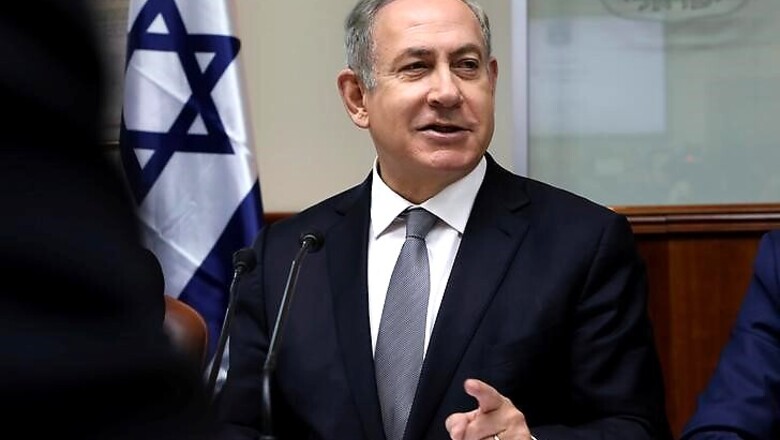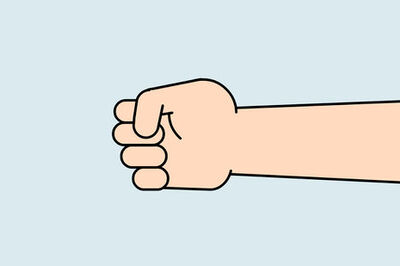
views
The vow made Tuesday by Prime Minister Benjamin Netanyahu to annex a chunk of the occupied West Bank if he is returned to power by voters next week would, if carried out, mean that Israel would literally surround any future Palestinian state.
The area he was talking about covers the Jordan Valley and Northern Dead Sea bordering Jordan and is roughly a third of the West Bank’s territory. Here’s why the zone is considered so important by Israel and why, in the view of Netanyahu’s critics, annexation could doom the two-state solution to the Israeli-Palestinian conflict.
The Area Is a ‘Strategic Asset’
Speaking at a news conference near Tel Aviv, Netanyahu asserted that along with the Golan Heights, the valley and northern Dead Sea are “the eastern border of the State of Israel.” He was referring to how the Jordan River separates Jordan, to the east, from Israel and the West Bank.
The river flows south from the Sea of Galilee for about 185 miles and feeds into the Dead Sea. Israel considers that natural barrier “an essential strategic asset” to ensure its security and prevent weapons smuggling by Palestinian militants into the West Bank.
It’s also a big swath of land. According to Israeli human rights group B’Tselem, the Jordan Valley and the northern Dead Sea comprise almost 30% of the West Bank, much of which is already under Israeli control.
“This is the eastern defensive wall that guarantees that we will never again be a mere few miles wide,” Netanyahu said.
Much of the area in question is open, arable land that the Israeli Army already uses for operations. The area also has enormous potential for agricultural and energy projects, among other uses. The Dead Sea draws tourists, and salt and minerals are mined there.
Israeli Settlements Have Spread in the Area
Israel seized the West Bank from Jordan in the 1967 war. Most of the world considers it occupied territory and Israeli settlements there to be illegal. Nonetheless, about 200 settlements have been established in the West Bank and in East Jerusalem, which the Palestinians want as their capital under a two-state solution to the conflict.
The Jewish Virtual Library, a website run by the American-Israeli Cooperative Enterprise, said that efforts to establish Jewish settlements in the Jordan Valley date back to shortly after the 1967 war. The thinking was that if the area were settled by Jews, then Jerusalem, the disputed holy city regarded by Israel as its capital, would be more central in relation to the rest of the country. (In a diplomatic victory for Netanyahu, President Donald Trump moved the U.S. Embassy from Tel Aviv to Jerusalem last year, despite international criticism that Jerusalem’s status has not been resolved.)
Palestinian leaders have said that the settlements are among the major obstacles to any possible peace agreement with Israel.
According to B’Tselem, nearly 90% of the Jordan Valley and the area around the northern Dead Sea has already been designated as part of what is known as Area C, meaning it is under full Israeli security and civil control. B’Tselem says Israel has restricted Palestinians from building or even entering much of the land. By its count, in 2016, there were about 65,000 Palestinians and 11,000 settlers living there, B’Tselem said.
The areas not designated as Area C include the city of Jericho, which would not be annexed under Netanyahu’s proposal.
Netanyahu Wants to Redraw Israel’s Borders
The prime minister argued that his plan would give Israel “secure, permanent borders” to the east for the first time in its history. He said he wanted to seize on the Trump administration’s openness to Israeli annexation of at least parts of the West Bank. In an interview in June, the U.S. ambassador, David M. Friedman, asserted that Israel has a right to annex at least some of the West Bank, a view that is rejected by many other countries.
Karen Zraick c.2019 The New York Times Company

















Comments
0 comment